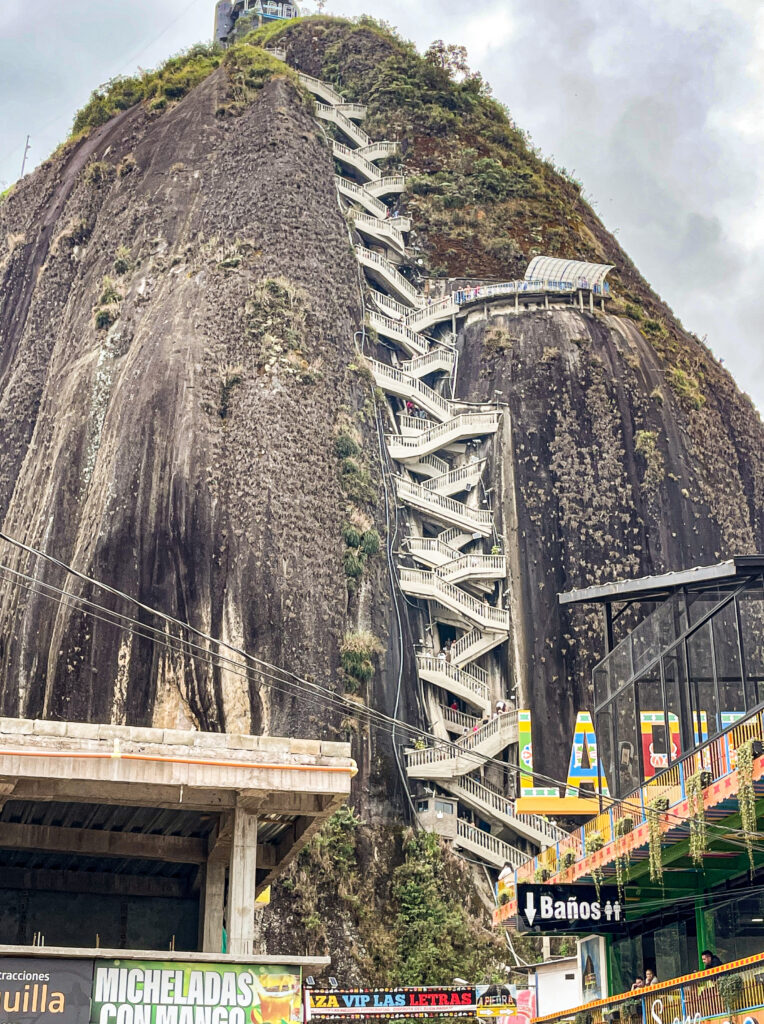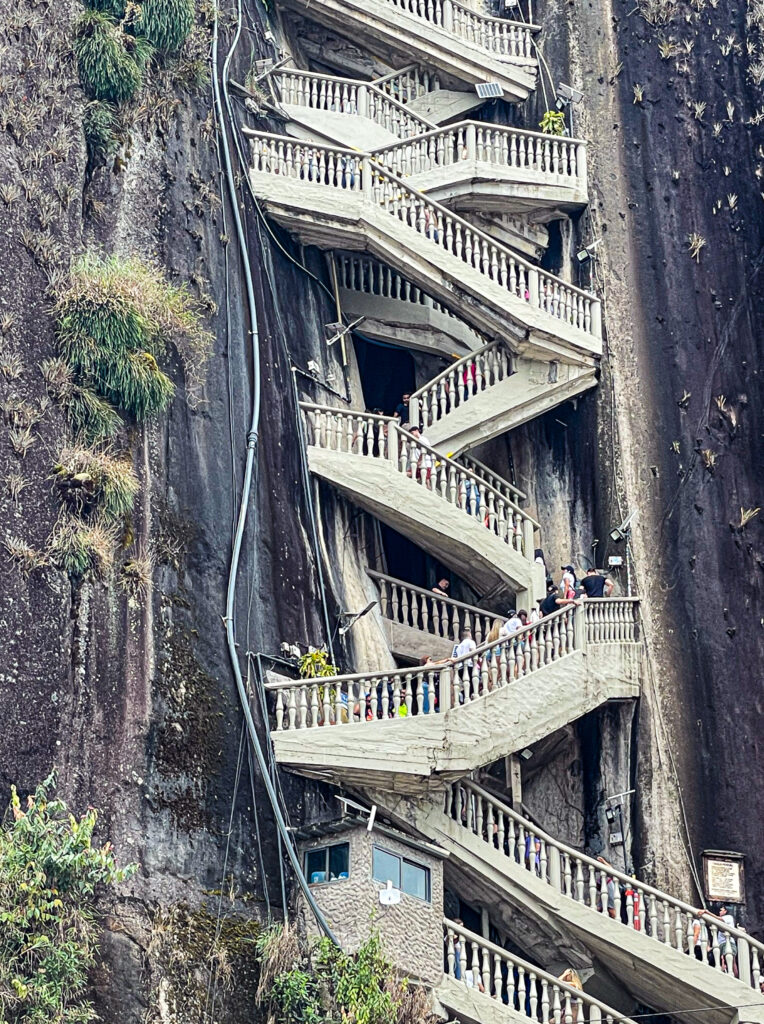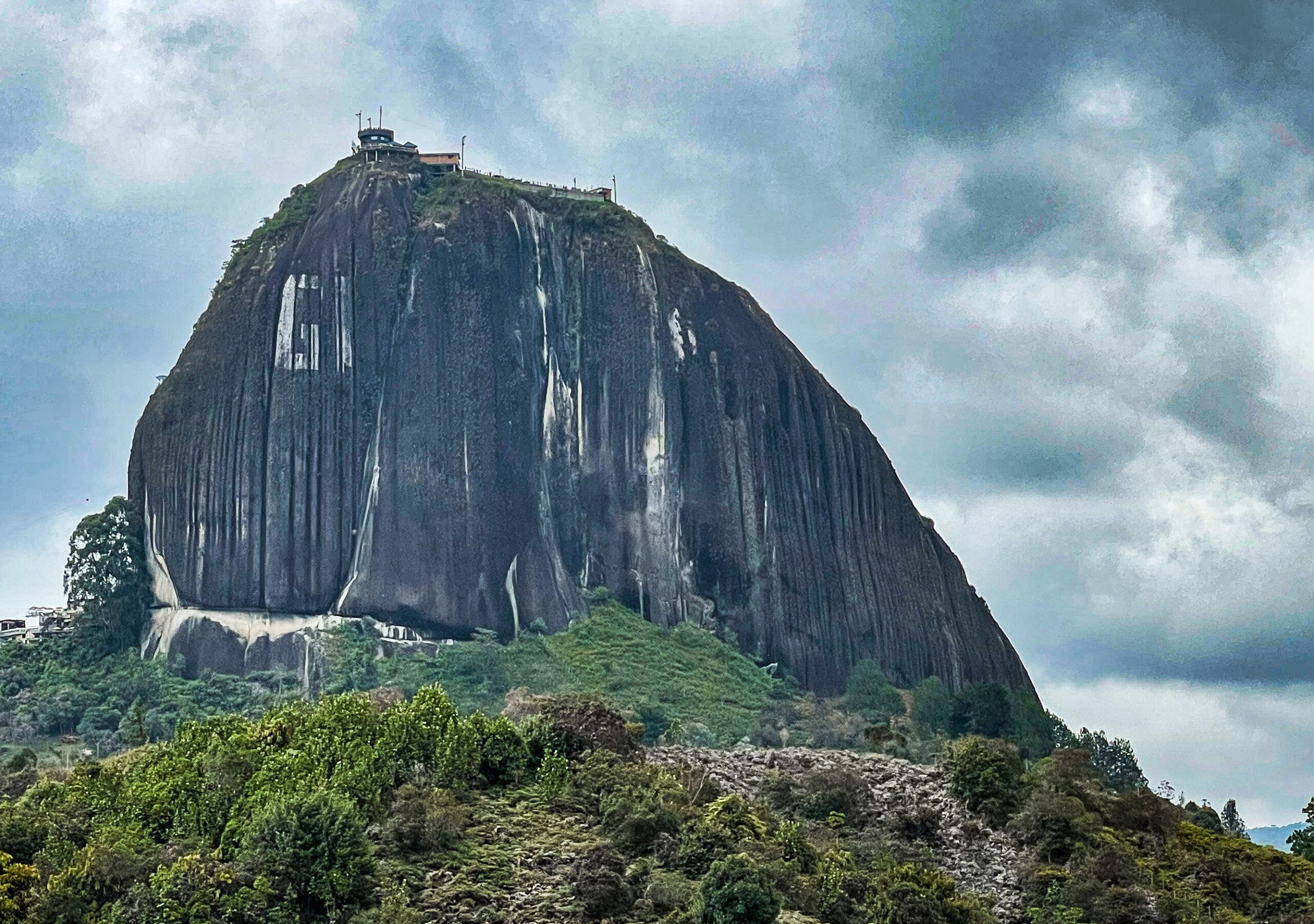Just a few miles from Guatapé, El Peñol, a 656-foot granite rock, juts out of the earth. No ordinary rock, El Peñol, a Colombian National Monument, attracts thousands of people daily, many who climb the 708 steps for spectacular views of the region. On its top, vendors sell handicrafts, trinkets, and tee-shirts. One pays for the privilege of experiencing a panorama of the countryside with about a five-dollar admission fee at the bottom of the stairs.


Two facing rows of souvenir and snack shops and an interpretive center line the walk leading to the entrance of the 708-step staircase to the top. Halfway up, climbers can stop at a shrine to the Virgin Mary. Maybe she provides encouragement to those tired souls to reach the top.
How did this 65-million-year-old rock come to be? For the lexophiles among us (lovers of words), the Rock of Guatapé is known as an inselberg (as opposed to an iceberg), an isolated rock hill or small mountain protruding from level or gently sloping ground. Over millennia, its granite resisted weather and erosion, unlike surrounding bedrock. Like an iceberg, more of the rock exists below the ground surface than above.

If You Go
Getting There—Non-Stop Flights from the U.S. to Medellín:
10 daily from Miami
1 daily from New York City, Orlando, Atlanta, and Los Angeles
Getting Around:
Hire a guide to take you or join a small tour group for half-day trips to visit both sites.
By bus: take a taxi, metro, or Uber to Terminal Norte (Medellín’s North Terminal) for the Guatapé ticket booth. Buses leave about every hour, seven days a week for the two-hour ride. At this writing, about $4.00 gets you there. You can get off first at El Peñol and then take the next bus into town. Check in Guatapé for the time of the last bus returning to Medellín. Or stay overnight in a local hotel.
By taxi: about $68 one-way.
- Travel Agent:
- I used Aracanto Tour Specialists for our full Colombia trip. Felipe and Margoth Rico will help you plan your visit to Medellín, provide you with an excellent guide (ask for Juan Carlos Venegas), as well as plan your stay elsewhere in Colombia.


